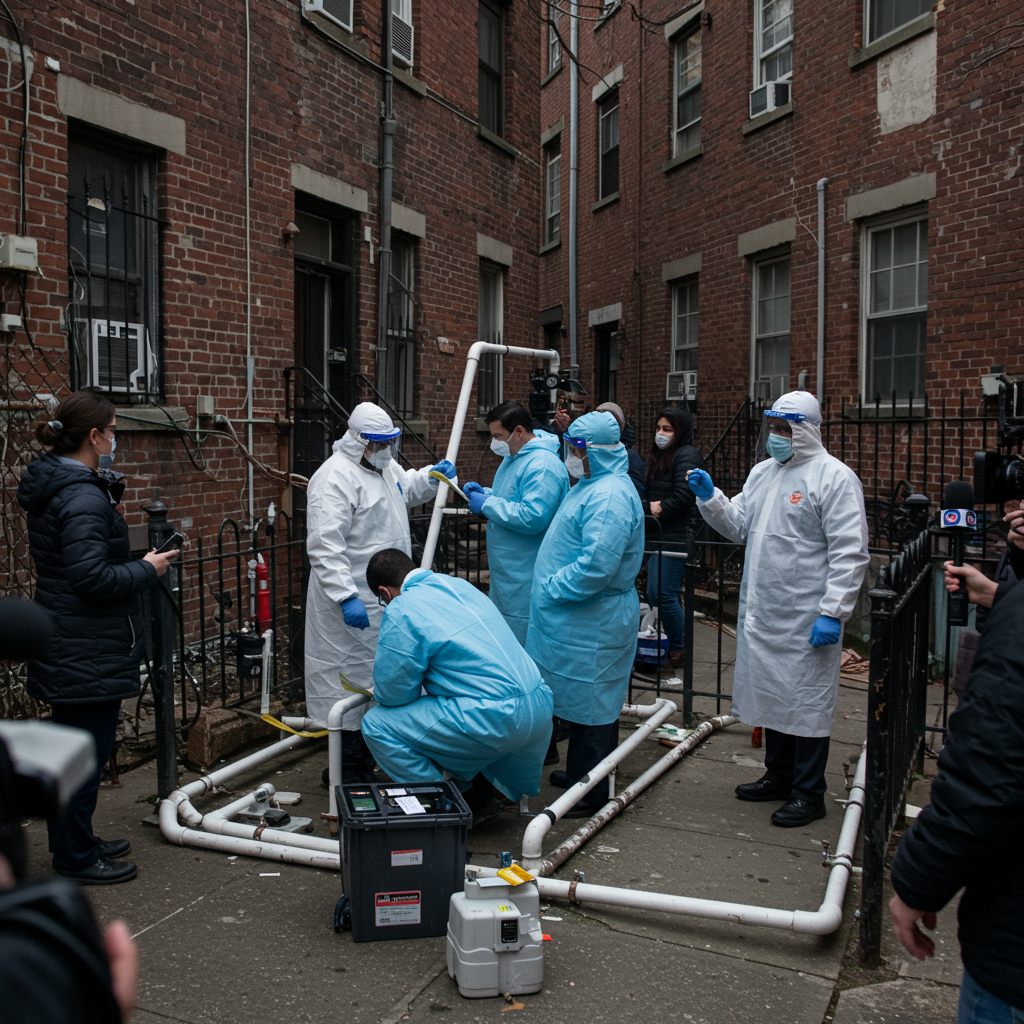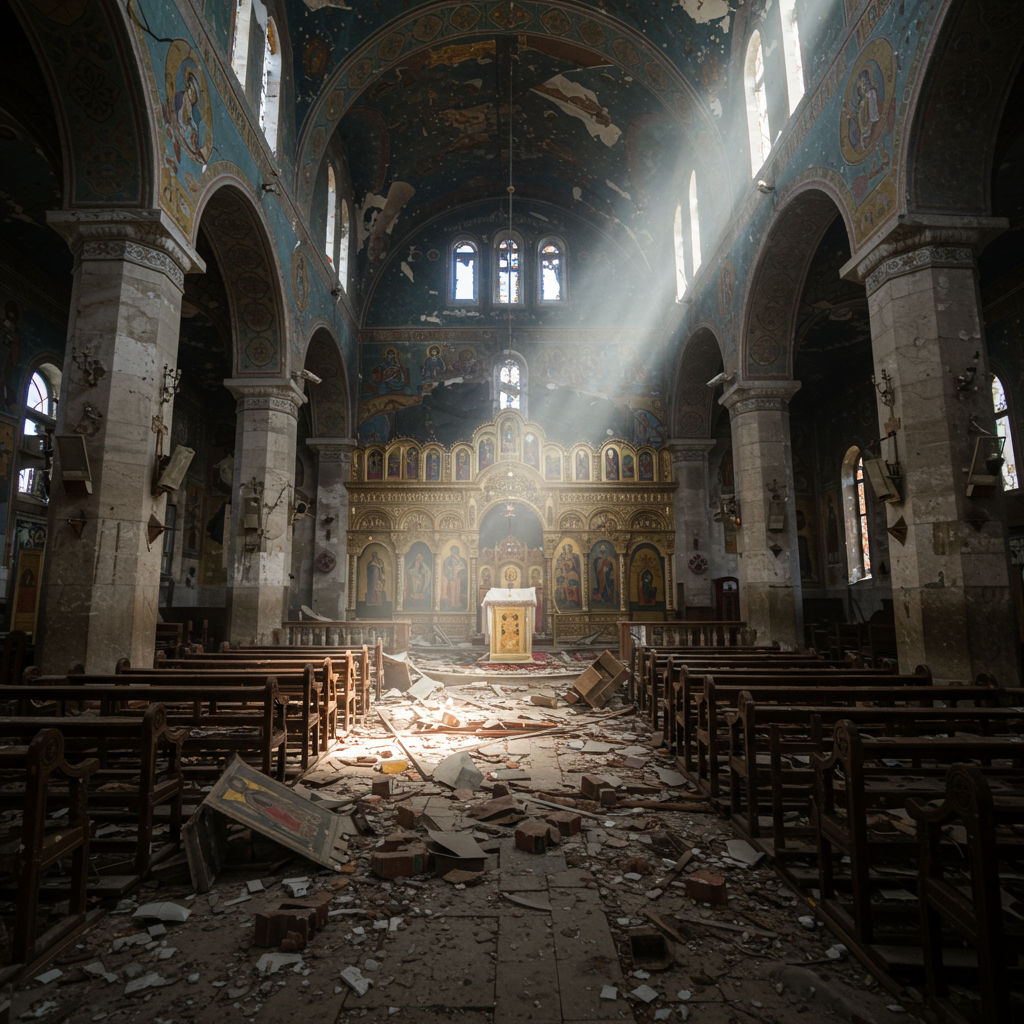An urgent public health investigation is underway in the Bronx. New York City health officials are probing a local apartment complex after two residents contracted Legionnaires’ disease. This concerning development highlights persistent public health challenges within the city. The incident at Parkchester North Condominiums involves the building’s hot water system. Officials identified the dangerous Legionella bacteria thriving within its engineering infrastructure.
This latest discovery comes amidst broader fears about Legionnaires’ in the metropolitan area. Nearby Harlem recently experienced a significant outbreak. That cluster tragically led to six deaths and sickened over 100 individuals. The city’s health department is now actively collaborating with the Bronx building management. They aim to undertake extensive remediation efforts to ensure resident safety. These efforts, however, could span months or even years.
Urgent Investigation at Parkchester North Condominiums
The New York City Health Department launched its investigation into the Parkchester North Condominiums. This action followed reports of two residents testing positive for Legionnaires’ disease. Both diagnoses occurred within a concerning ten-month timeframe. Health officials swiftly evaluated the complex’s engineering systems. Their probe quickly pinpointed the source of the threat.
Legionella bacteria were found actively growing within the building’s hot water system. This finding confirms a localized contamination source. The city’s health department has since provided immediate recommendations. These guidelines aim to help residents safely use their water supply. They also help minimize the risk of further Legionnaires’ disease contraction. The situation underscores the critical importance of vigilant building maintenance. It also highlights robust public health monitoring.
Understanding Legionnaires’ Disease: A Public Health Priority
Legionnaires’ disease is a severe form of pneumonia. It is caused by the bacterium Legionella. This specific bacterium thrives in warm water environments. Common sources include cooling towers, hot tubs, decorative fountains, and large plumbing systems. Crucially, Legionnaires’ disease is not transmitted from person to person. Instead, individuals contract it by inhaling contaminated water droplets or mist.
Symptoms of Legionnaires’ disease typically appear two to ten days after exposure. These can include a severe headache and persistent muscle aches. Shortness of breath is also a common indicator. Patients often experience a cough and a high fever. Early diagnosis and treatment are vital. The illness is treatable with antibiotics. Prompt medical attention can significantly improve outcomes for affected individuals. Public awareness of these symptoms is essential for early intervention.
A Broader Crisis: Legionnaires’ Outbreaks Across NYC
The Bronx incident is not isolated. It unfolds against a backdrop of a more severe Legionnaires’ disease cluster. This larger outbreak has plagued the Harlem community this summer. Across the Harlem River, health officials have been battling this widespread health crisis. The toll in Harlem includes over 100 people sickened. Tragically, at least six individuals have died.
The Harlem outbreak has already led to legal action. A lawsuit was filed recently. It alleges that two construction companies are responsible for the crisis. The legal action claims that the outbreak was “completely preventable.” It further states that it resulted from “cut corners” during construction. This lawsuit underscores the serious consequences of negligence. It highlights the vital role of proper maintenance and adherence to safety protocols. These cases collectively demonstrate an urgent need for robust public health strategies across New York City’s infrastructure.
Safeguarding Residents: Health Department Guidance
During the ongoing remediation, residents of Parkchester North Condominiums must remain vigilant. The health department has issued specific recommendations. These are designed to reduce the risk of exposure. While the exact details were not specified in initial reports, typical advice includes:
Avoid prolonged hot showers: This reduces the inhalation of potential Legionella-laden mist.
Clean and flush fixtures: Regularly clean showerheads and faucets to prevent bacteria buildup.
Use cold water for drinking: If there’s a concern about the hot water system, use cold water for consumption.
Seek medical attention: Anyone experiencing symptoms like fever, cough, or muscle aches should contact a healthcare provider immediately.
These measures are crucial for protecting the community. They empower individuals to take proactive steps in their own homes. The health department is committed to keeping residents informed. It also aims to ensure their safety throughout this challenging period.
The Long Road to Remediation and Future Prevention
Addressing Legionella contamination in a building’s water system is a complex task. The “extensive remediation” mentioned by the health department can indeed take “months or years.” This process typically involves several critical steps. It often begins with a thorough disinfection of the entire hot water system. This might include hyperchlorination or thermal eradication. Engineers then assess the system’s design and maintenance. They identify areas conducive to bacterial growth.
Long-term solutions often involve upgrading older plumbing infrastructure. This prevents stagnant water and biofilm formation. Regular monitoring and testing of the water supply become paramount. The goal is to ensure the bacteria’s permanent elimination. This incident underscores the importance of proactive building management. It also highlights rigorous adherence to public health guidelines. Preventing future outbreaks relies on continuous vigilance. It also requires significant investment in infrastructure maintenance.
Frequently Asked Questions
What is Legionnaires’ disease and how does it spread?
Legionnaires’ disease is a severe type of pneumonia caused by the Legionella bacterium. It is contracted when individuals inhale tiny water droplets or mist contaminated with these bacteria. Common sources include cooling towers, hot water systems, and large plumbing networks where warm, stagnant water can allow the bacteria to multiply. Importantly, Legionnaires’ disease does not spread from person to person. Symptoms typically include headache, muscle aches, shortness of breath, cough, and fever, appearing 2-10 days post-exposure.
What steps are being taken at Parkchester North Condominiums to address the Legionella outbreak?
Following the diagnosis of two residents with Legionnaires’ disease, New York City health officials are actively investigating the Parkchester North Condominiums. They identified Legionella bacteria growing in the building’s hot water system. The city’s health department is now collaborating with building management on “extensive remediation” efforts, which could last for months or years. In the interim, residents have received recommendations on safe water usage practices to minimize their risk of contracting the disease.
What should Bronx residents do if they suspect they have Legionnaires’ symptoms?
Bronx residents, particularly those living in or near the Parkchester North Condominiums, should seek immediate medical attention if they develop symptoms consistent with Legionnaires’ disease. These symptoms include headache, muscle aches, shortness of breath, a cough, and fever, especially if they appear 2-10 days after potential exposure to contaminated water. Early diagnosis and treatment with antibiotics are crucial for a successful recovery, as the disease can be severe if left untreated.
Conclusion: Community Vigilance and Public Health Action
The investigation at Parkchester North Condominiums serves as a stark reminder. Legionnaires’ disease remains a serious public health concern, particularly in densely populated urban environments. The city’s health department is taking decisive action. Their comprehensive evaluation and remediation plan aims to protect residents. It also seeks to eradicate the Legionella bacteria from the building’s water supply.
While the “extensive remediation” is underway, community vigilance is key. Adhering to health department recommendations helps keep residents safe. The wider context of the Harlem outbreak also highlights the need for ongoing public health infrastructure improvements. These efforts must include diligent maintenance and accountability. New York City remains committed to safeguarding its residents. This commitment ensures that vital public health issues are addressed with urgency and expertise.



